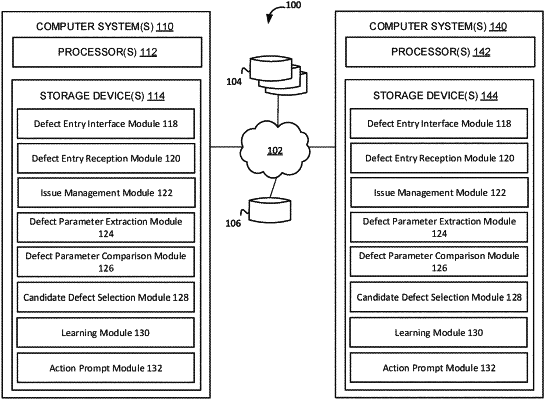| CPC G06F 16/2365 (2019.01) [G06F 3/04847 (2013.01); G06F 16/215 (2019.01); G06F 16/2282 (2019.01); G06F 16/252 (2019.01); G06F 16/9535 (2019.01)] | 17 Claims |

|
1. A system comprising:
one or more processors; and
a memory storing instructions that, when executed by the one or more processors, cause the system to perform:
storing defect data objects comprising data fields that have been inputted to the system in a database accessible by the system;
receiving, from a user, a selection of one or more defect data objects from the defect data objects;
generating an issue data object for the one or more selected defect data objects based on the respective data fields data fields of the one or more selected defect data objects, wherein the issue data object includes a common attribute documented in the one or more selected defect data objects;
determining, using a machine learning model, according to weights of attributes corresponding to the data fields, one or more candidate defect data objects to be potentially included in the issue data object;
receiving one or more inputs regarding the one or more candidate defect data objects;
selectively incorporating at least one of the one or more candidate defect data objects into the issue data object based on the received one or more inputs;
adjusting one or more of the weights in response to the selective incorporation of at least one of the one or more candidate defect data objects;
implementing an updated machine learning model in which the one or more of the weights have been adjusted;
determining a potentially responsible parameter for a subset of defect data objects within the issue data object;
in response to an action prompt, determining a change in a number of defect data objects within the issue data object;
in response to determining that the number of defect data objects in the issue data object has increased, determining the potentially responsible parameter not to be a root cause of the defect; and
in response to determining that the number of defect data objects in the issue data object has decreased, determining the responsible parameter to be a root cause of the defect.
|